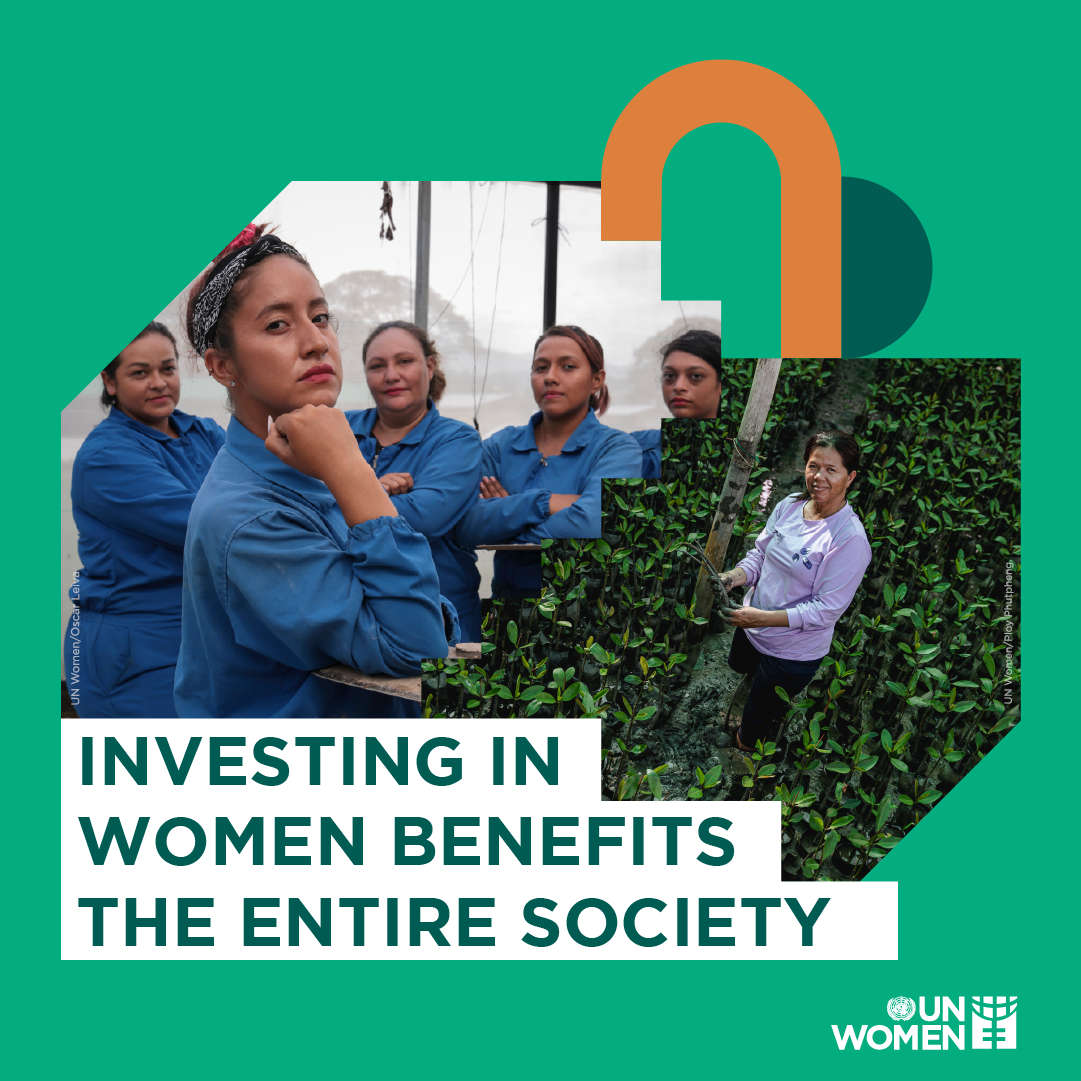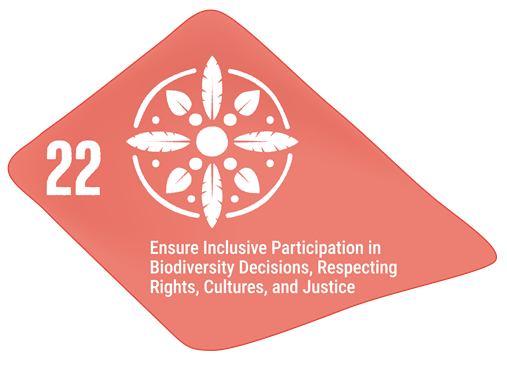
International Women’s Day-- 8 March 2024
Happy #InternationalWomensDay!
— UN Biodiversity (@UNBiodiversity) March 8, 2024
Women play critical roles in:
🌱biodiversity conservation & sustainable use
🌳ecosystem restoration
⚖️environmental justice
➕& much more!#IWD2024 #InvestInWomen
🔗Read our web story: https://t.co/PM0OR7rAPp
📽️Watch a message from @hdavidcooper: pic.twitter.com/39CVW7sQvt
This International Women’s Day, 8 March 2024, join the United Nations in celebrating under the theme Invest in women: Accelerate progress.
The world is facing many crises, ranging from geopolitical conflicts to soaring poverty levels and the escalating impacts of climate change. These challenges can only be addressed by solutions that empower women. By investing in women, we can spark change and speed the transition towards a healthier, safer, and more equal world for all.
Gender equality benefits us all. Yet achieving it remains one of the greatest human rights challenges of our time. We must invest in women and girls to achieve sustainable development, justice and equity, and to achieve the goals and targets of the Biodiversity Plan.
Currently there is a staggering 360 billion USD annual deficit in spending on gender-equality measures. The current economic system is exacerbating poverty and inequality and is negatively impacting the environment. This reality disproportionately affects women and other marginalized groups around the world. Shifting towards and investing in a green economy is one of the ways to amplify women’s voices.
The Kunming-Montreal Global Biodiversity Framework, known also as “the Biodiversity Plan” aims to halt and reverse the loss of biodiversity by 2030 for the benefit of people and planet. Women play critical roles in biodiversity conservation and sustainable use, ecosystem restoration and environmental justice. So, as recognized in the Plan, successful implementation will depend on ensuring gender equality and empowerment of women and girls, and on reducing inequalities.
A specific target (Target 23) aims to ensure gender equality through a gender-responsive approach, recognizing the equal rights and access to land and natural resources for women and girls, and their full, equitable, meaningful, and informed participation and leadership at all levels of action, engagement, policy, and decision-making processes related to biodiversity.
The Biodiversity Plan is accompanied by a very ambitious Gender Plan of Action. This sets out concrete actions to be taken by all actors to enable women and girls to fully participate and contribute in implementation processes.

More information:
Gender Plan of Action (Decision 15/11) (2022)
Related Targets in The Biodiversity Plan
Ensure the full, equitable, inclusive, effective and gender-responsive representation and participation in decision-making, and access to justice and information related to biodiversity by indigenous peoples and local communities, respecting their cultures and their rights over lands, territories, resources, and traditional knowledge, as well as by women and girls, children and youth, and persons with disabilities and ensure the full protection of environmental human rights defenders.
Why is this target important?
Indigenous peoples and local communities have a cultural and holistic understanding of nature based on their traditional knowledge, practices and innovation. This information and understanding of biodiversity in turn play a crucial role in the conservation and sustainable use of biodiversity. The insights of indigenous and local communities on local ecosystems play a fundamental role in developing conservation initiatives that integrate cultural values and traditional governance systems, including sustainable use such as resource management techniques, traditional hunting and fishing, and elective harvesting. Further, their lands encompass diverse ecosystems, ranging from forests and wetlands to mountains and coastal areas with high concentrations of biodiversity and often promote sustainable land use, including agroforestry, rotational farming and community-based conservation management systems. Involving indigenous peoples and local communities in biodiversity conservation and the recognition of their perspectives and expertise can contribute to the development of context-specific and effective conservation strategies.
The target also recognizes the importance of meaningful participation of women and girls, as well as the inclusion of children, youth and persons with disabilities, in promoting social equity and empowering these groups to actively contribute to biodiversity conservation. It also highlights the need to protect environmental human rights defenders as they are at the forefront of protecting biodiversity by monitoring and exposing environmental violations, promoting sustainable practices and advocating for a human rights-based approach to conservation efforts.
Links to other elements of the Biodiversity Plan and other frameworks and processes.
- Actions to reach Target 22 should take into account the considerations for implementation identified in section C of the Kunming-Montreal Global Biodiversity Framework.
- Progress towards Target 22 will directly support the attainment of all goals and targets. However, progress towards this target is particularly relevant for the achievement of targets 1, 3, 5, 9, 13, 21 and 23. Conversely, progress towards targets 21 and 23 will support progress towards this target.
- Target 22 addresses issues that were also addressed by Aichi Biodiversity Target 18.
- Elements of Target 22 are also addressed in the targets of the Sustainable Development Goals, including targets 1.4, 5.5, 5.a, 10.2, 10.3, 16.3, 16.7, and 16.10.

Ensure gender equality in the implementation of the framework through a gender-responsive approach where all women and girls have equal opportunity and capacity to contribute to the three objectives of the Convention, including by recognizing their equal rights and access to land and natural resources and their full, equitable, meaningful and informed participation and leadership at all levels of action, engagement, policy and decision-making related to biodiversity.
Why is this target important?
Gender roles in many countries influence the conservation and sustainable use of biodiversity by impacting the ability of women to participate in decision-making and by affecting their access to and control of land, biological resources and other productive assets. Considering gender dimensions in biodiversity-related decision-making can lead to positive outcomes for biodiversity and gender equality. Women often play a vital role in managing natural resources and promoting sustainable agriculture, forestry and fisheries. When women have access to resources, land, education, healthcare and economic opportunities on par with men, they are better able to participate in decision-making processes and advocate for environmental protection.
Links to other elements of the Biodiversity Plan and other frameworks and processes.
- Actions to reach Target 23 should take into account all of the considerations for implementation identified in section C of the Kunming-Montreal Global Biodiversity Framework.
- Progress towards this target will contribute to the attainment of goals A and B of the Kunming-Montreal Global Biodiversity Framework. Progress towards this target would also contribute to the attainment of all targets and in particular targets 9, 10 and 11.
- Elements of this target were previously addressed in Aichi Biodiversity Target 14.
- Elements of Target 8 are also addressed in the targets of the Sustainable Development Goals, including targets 5.1, 5.5 and 5.c

Click here for more information about Target 23